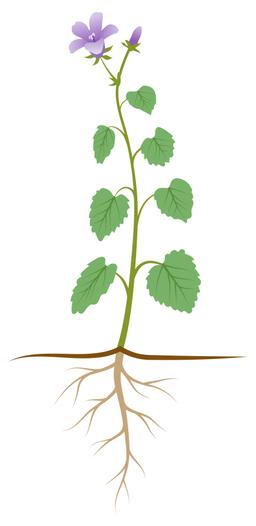How and why we group plants
I can explain how plants can be grouped using observable characteristics.
How and why we group plants
I can explain how plants can be grouped using observable characteristics.
These resources will be removed by end of Summer Term 2025.
Switch to our new teaching resources now - designed by teachers and leading subject experts, and tested in classrooms.
These resources were created for remote use during the pandemic and are not designed for classroom teaching.
Lesson details
Key learning points
- Scientists group plants to make it easier to identify, name and learn about them.
- Plants can be divided into groups or 'classified' by looking at the similarities and differences between them.
- Generally, plant life can be broken up into flowering plants and non-flowering plants.
- Plants can be grouped according to if they do or do not produce seeds.
- We can create classification keys by asking a series of yes/no questions about the observable characteristics of plants.
Keywords
Classify - To classify things is to sort them into groups.
Flowering - Flowering plants reproduce by making seeds inside flowers.
Non-flowering - Non-flowering plants reproduce by making spores.
Seeds - Some plants reproduce by making seeds.
Spores - Some plants reproduce by making spores.
Common misconception
Pupils may think that all plants are green or that anything without a flower is not a plant.
Highlight the many examples of plants with different shapes, sizes and colours that are included in the lesson resources, reminding children that all of these are plants because they are living things that use the Sun’s light to make food.
To help you plan your year 6 science lesson on: How and why we group plants, download all teaching resources for free and adapt to suit your pupils' needs...
To help you plan your year 6 science lesson on: How and why we group plants, download all teaching resources for free and adapt to suit your pupils' needs.
The starter quiz will activate and check your pupils' prior knowledge, with versions available both with and without answers in PDF format.
We use learning cycles to break down learning into key concepts or ideas linked to the learning outcome. Each learning cycle features explanations with checks for understanding and practice tasks with feedback. All of this is found in our slide decks, ready for you to download and edit. The practice tasks are also available as printable worksheets and some lessons have additional materials with extra material you might need for teaching the lesson.
The assessment exit quiz will test your pupils' understanding of the key learning points.
Our video is a tool for planning, showing how other teachers might teach the lesson, offering helpful tips, modelled explanations and inspiration for your own delivery in the classroom. Plus, you can set it as homework or revision for pupils and keep their learning on track by sharing an online pupil version of this lesson.
Explore more key stage 2 science lessons from the Why we group and classify living things unit, dive into the full secondary science curriculum, or learn more about lesson planning.

Equipment
Clipboards
Content guidance
- Exploration of objects
Supervision
Adult supervision recommended
Licence
Starter quiz
6 Questions

anchor the plant and take in water
supports other parts of the plant and transports water and nutrients
where the plant makes its food
contains the reproductive parts of the plant

Exit quiz
6 Questions

seeds made in cones
spores
seeds made in flowers






